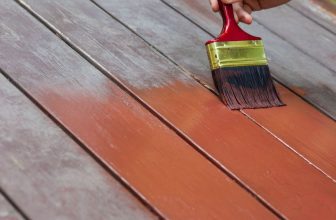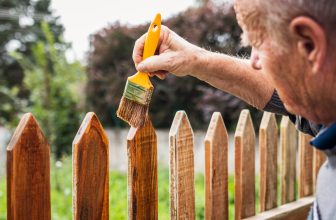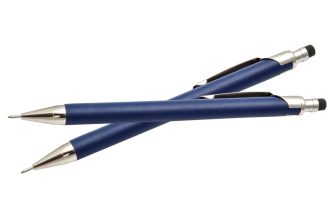Contents
A drill press vise that’s suited for your particular work will make your shop safer and your project more manageable. The right tool will free up your hands while you work, allowing you more control and precision while drilling.
We’ve tested many different drill press vises for adaptability to different workpieces, secure clamping, and ease of adjustment, and we put together this list of reviews and our buyer’s guide to help you decide which is ideal for your shop.
Best Drill Press Vises – Our Top Picks
BuildEazy.com may earn a commission if you purchase a product through one of our links.
Shop Fox specializes in premium woodworking tools that blur the lines between home and professional use. This cross-sliding vise is fit for casual woodworkers and those who use their shops regularly.
It slides in two perpendicular directions to give you great control over your workpiece’s positioning without having to unclamp and reset your vise. You can control the movement in small increments with easily adjustable cranks.
The two-direction adjustments mean that it’s taller than most. At 5¼ inches, it eliminates quite a bit of clearance between your stock and your drill bit. You’ll be limited in the thickness of the material with which you can work.
The vise is made entirely out of very durable metal. It weighs 22 pounds and feels like it will last through extensive use. It’s very affordable, despite being a high-quality tool.
The vise does wiggle a tiny bit during use. It’s not ideal for the precision required for professional milling and fabrication, but it’s suitable for most woodworking projects.
The jaw width is 4 inches, so you won’t be limited much in the width of the material you can clamp with it.
Wilton Tools 11694 4-Inch Cross Slide Drill Press Vise
Wilton Tools specializes in professional-grade vises, and this tool certainly fits into that category.
Wilton made this out of fine grain cast iron, so it’s very durable and feels like it’s all but indestructible. It weighs in at a hefty 20 pounds, and there are no plastic components included.
This vise adjusts in two directions to give you some freedom to position your workpiece before drilling. You can move in each direction quickly with micro-adjustment handles.
The jaw has a maximum opening of 4 inches, and the entire vise is 6 inches tall. As such, you won’t be limited much in the width of the material you can clamp, but the restricted clearance may limit the depth of material with which you can work.
Our favorite feature about this vise is the v-shaped groove pattern in the jaws. These grooves allow you to clamp round and cylindrical objects horizontally and vertically, making drilling safer.
The jaws do shift a tiny bit while you’re drilling. This vise isn’t ideal if you need a high degree of accuracy, but it’s plenty secure for most woodworking projects.
This vise is relatively inexpensive, so it’s likely to fit into your budget.
HHIP 3900-0183 Pro-Series Quick Slide Drill Press Vise
HHIP makes precision tools for non-professionals, so it’s no surprise that this is our favorite vise for secure clamping.
The jaws close very tightly, and you’re unlikely to experience any movement in your workpiece while you’re drilling.
The quick clamp lets you make rapid adjustments without having to spin handles so that you can get through your project faster and with less effort.
Our only issue with the jaws is that the bottom of the clamp extends beyond the clamping surface, so you won’t be able to hold small pieces of material in place unless you use vise parallels. This is slightly inconvenient if you plan to work with thin stock, but it won’t bother most woodworkers.
The vise is made out of durable iron and weighs in at 9.1 pounds. It’s likely to last through years of use and workshop abuse.
The jaws have a maximum width of 3½ inches, so you’ll be more limited in material thickness than with most other vises. However, it’s just over 2¾ inches tall, so it offers more vertical clearance for thicker project pieces.
Lastly, this vise only adjusts in one direction, but the quick-clamp makes lateral adjustments straightforward.
DELTA 20-621 4-Inch Drill Press Vise
DELTA makes tools that are on the high-end of the non-professional spectrum. This drill press vise provides the best value for the money, and it’s a very affordable option.
The vise is entirely cast iron, so you’d have difficulty damaging it. It weighs just 6 pounds due to its small size, but we’re confident that it’s just as durable as any other option we reviewed.
The jaws open up to a maximum of 4 inches. The option for the width of the material you can use it for is excellent. However, the drilling depth is just 1¼ inches below the top of the jaws, which is smaller than most other vises we tested.
The jaws do clamp firmly and won’t allow your workpiece to move around much while you drill.
The top of the jaws extend beyond the bottom and allow you to clamp thinner material. You can use the gap at the bottom to hold up to a ½-inch dowel in place horizontally.
There is no lateral adjustment on this vise, so you’ll have to unclamp and reset your workpiece to reposition under your drill. This can get a bit tedious if you often drill multiple holes into a single piece of wood or metal.
WEN 413CV Compound Cross Slide Drill Press Vise
WEN makes entry-level tools that have a moderate level of performance, which is what you can expect from this vise.
It’s very affordable, especially given that it’s a cross slide vise. Most other options in this price range have just one degree of adjustability or none at all.
Despite being on the lower end of the price range, WEN made this out of durable, powder-coated iron that weighs 15.4 pounds. It feels like it will stand up to years of use.
You can adjust your workpiece in two directions while it’s clamped. Adjustment wheels give you the freedom to maneuver your stock in small increments for precision.
The jaws only open up to 3¼”, so you can only use this for smaller stock. They have a v-shaped groove on one side, allowing you to clamp circular material horizontally or vertically. The jaws are set very high up and will sit 6 inches above your work surface, so this vise reduces the clearance between your workpiece and the bit. It’s better suited for larger drill presses.
The vise comes with a comprehensive instruction manual and information sheet that can help get you set up and using it safely.
The mounting brackets are set such that they’re compatible with most large brand name drill presses, but you should check the information sheet above and measure your mounting holes on your press to make sure it will fit.
WEN 433TV Benchtop and Drill Press Tilting Angle Vise
This drill press vise lacks lateral adjustability, but it can tilt and lock your piece at specific angles to your drill bit. It’s an excellent option for drilling on different planes.
The tilting mechanism can’t be infinitely tuned and must be locked in increments of 15 degrees between 0 and 90. It provides plenty of tilting options for most woodworking projects. However, the angle locking mechanism isn’t the best and does allow for slight movement of your workpiece while you drill.
The jaws open up wide enough to accept stock up to 4¼” wide, and they provide excellent clamping pressure. They have vertical and horizontal V-shaped grooves in them, so you can confidently clamp circular material.
The vise weighs 12.12 pounds and feels very durable. WEN made this out of powder-coated iron, so we’re confident it will stand up to the test of time, even in a busy workshop.
The linear mounting brackets are set 5½ inches apart and are compatible with most drill presses. However, we recommend you measure your drill press mounts before purchasing.
This vise is very affordable, and while it doesn’t provide the sturdiest work surface for high-precision work, it’s excellent for most hobbyists or casual woodworkers.
Irwin Tools Drill Press Vise
Irwin Tools makes products designed for light- or medium-duty, non-professional work.
This drill press vise is one of the lightest and most portable ones we tested at just 7 pounds. Despite its small size and weight, it feels like it’s built to last. It’s made out of forged iron and will likely take some abuse without getting damaged.
It’s priced very competitively and can be an excellent option for those on a budget.
The jaws open up to 4½ inches, making it a great option for you if you commonly work with thicker stock. They’re textured on the inside to prevent your workpiece from moving around while you work, and the clamping pressure is excellent.
It isn’t adjustable in any direction, so you will need to stop your work and reposition your piece if you need to move your drilling site. The clamp doesn’t have a quick release, so this adjustment can get a bit time-consuming if you need to drill in multiple areas on a piece of stock.
The vise is very short at just 2.63 inches and will fit under just about any drill press with plenty of clearance.
It’s easy to install and position with its large mounting brackets. The slotted base will be adaptable to most drill presses.
Yost 3 In. Heavy Duty Drill Press Vise
Yost exclusively manufactures vises and clamps, and their expertise shines through in this drill press vise.
This vise weighs just 6.61 pounds and is highly portable, but it’s still made out of very durable cast iron that feels indestructible.
It lays relatively low compared to your work surface, so you can easily fit it under most drill presses and still leave plenty of clearance above.
The jaws only open up to 3 inches, making it suitable for thinner material than most other clamps. They have a vertical and horizontal V-groove on one side to make clamping round objects straightforward and safe.
This vise comes with a very low price tag, but it seems to be of high quality. The clamp turns and slides smoothly and with ease and still provides excellent clamping pressure.
It has an impressive 1-inch throat depth, so you can use it safely for very deep material.
There are only two set holes for mounting, so there’s a chance it won’t be compatible with your drill press. Make sure this vise will fit your drill press before purchasing.
Bora 551027 Drill Press Vise
Bora makes high-quality tools focusing on portability, and at just 3.84 pounds, this drill press vise fits nicely into their tool lineup.
This is lightweight for easy transportation, but it’s still made out of durable aluminum. It won’t last nearly as long or stand up to as much use as an iron vise, but it’s an excellent option for portability or casual woodworkers.
The jaws open up to 4 inches, so you can use this tool to clamp thick pieces of material. They include a V-shaped groove on one side to allow for clamping of round materials horizontally.
The mechanism for clamping is similar to a screwdriver handle. This is a plastic piece that isn’t as durable as metal, and it also doesn’t offer much leverage for clamping down on your stock.
As such, it’s a bit harder than most other vises to tighten and won’t provide the same clamping pressure as those with adjustment knobs that offer leverage. However, we do love the quick-release included on the clamp.
It doesn’t move in any direction, so you will need to unclamp and reposition your stock if you need to adjust.
Wilton 11674 4-Inch Industrial Drill Press Vise
Wilton makes clamps and vises for tradespeople, so this is suitable for professionals. It offers excellent clamping pressure and keeps a good grip on just about any stock.
This vise is made out of cast iron and steel, so we’re confident that it will last for many years of constant use. Wilton stands behind this product with a lifetime warranty that guarantees it won’t get damaged beyond use under normal wear and tear. This guarantee of performance and durability also makes this a great option for professional or industrial use.
It’s relatively small and weighs 9.15 pounds. It doesn’t adjust once clamped, so you will need to release your stock and reposition if you need to drill in a different area.
The vise is only 2¾ inches tall, so you’ll have plenty of clearance above your workpiece while working. The throat depth is considerable, making this vise suitable for deep pieces of wood or metal.
The jaws open up to 4 inches and have a very smooth finish on them, so even softwoods won’t get marred by the steel. They also have V-shaped grooves on one jaw to allow clamping of round material vertically and horizontally.
Unfortunately, there are no easy mounting brackets, so you’ll need to purchase a clamping kit to secure the vise using its T-slots. The vise itself is very affordable, especially given the quality, durability, and warranty, but the additional clamping kit may bring you over your budget.
Buyer’s Guide
As you can see, there is no such thing as a one-size-fits-all option. Carefully consider the features below when deciding on a vise to make sure you get the best one for your workshop.
Why You Need a Drill Press Vise
Most woodworkers and metalworkers purchase a power drill before they invest in a drill press. Power drills are versatile and highly portable, but they can’t come close to offering the precision and stability of a drill press.
Vises are excellent additions to your tool collection if you’re looking for safe drilling and a high degree of accuracy.
A drill press vise amplifies that precision in your work. Whether you clamp your workpiece to your drill press’s table or hold the piece while you drill, you will never match the security and immovability of a drill press vise. Check out this video to get a better idea of how versatile and useful a drill press can be.
Types of Drill Press Vises
There are three main kinds of drill press vises, each distinguishable by the amount of adjustability you have while working.
Standard or Flat Vises
Standard drill press vises – sometimes referred to as flat vises – offer secure clamping of a workpiece but no adjustment points. They hold the piece firmly in place, and you will need to unclamp the stock if you need to reposition it under your drill bit. These are often the cheapest options and offer excellent stability, even in the lower price range.
Sliding Vises
Sliding vises clamp the workpiece and can then be adjusted laterally, allowing you to reposition your stock without having to unclamp. Some sliding vises move in one direction, while cross slide vises allow two planes of movement.
These are often more expensive, and those with a high degree of precision will be the priciest vises available.
Tilting Vises
Tilting vises usually don’t slide while clamped but instead can be tilted to hold your workpiece at an angle to your drill bit. They have the unique ability to let you drill into your stock at an angle with a preset degree.
Cross Slide Vise Vs. Flat
Cross slide vises give you adjustability while your stock is clamped in place. They’re ideal if you typically drill into multiple areas of a single piece of stock or if you want a high degree of precision.
They’re often more expensive, especially for those that are accurate and hold your piece securely without shifting accidentally.
Flat vises either offer just one degree of adjustability or none at all. They’re simpler in construction and usually cheaper.
Flat vises have the added benefit of leaving you plenty of clearance between the jaws and your drill bit. They’re better suited for smaller drill presses or if you plan to use deep stock.
Intended Material
Drill press vises can usually handle metal and wood, but those with textured jaws offer a better grip on slick metal stock and may give you more confidence while you work. You may want to choose a vise with textured jaws if you do a lot of metalwork.
Additionally, some jaws have V-shaped grooves running vertically, horizontally, or both. You can use these to clamp round materials like dowels or pipes and reduce the chance of slipping. Opt for jaws with these grooves if you want to be able to work with round stock.
Physical Features
There is a myriad of physical features you should keep an eye out for that can make your vise better suited for the projects you usually do.
Adjustment Increments
Sliding vises and tilting vises typically include specific increments that you can adjust them in or use to measure accurately. Most tilting vises have preset angles at which you can clamp your stock, limiting you to certain degrees of adjustability. Choose a vise that includes the increments you think you’ll need for the work you typically do.
Sliding vises often include measurements on the adjustment handles that give you a certain degree of precision. Some allow for micro-adjustments for accuracy, while others offer rapid adjustment but with less precise movements.
Throat Depth
The throat depth is the measurement between the base of the vise and the top of the jaws. It measures the depth of stock you can clamp securely.
More considerable throat depths give you better control with thick material because they offer more vertical support. Shallow throat depths are easier to use with thin material but won’t hold deeper pieces as sturdily.
Dimensions
Your entire vise’s dimensions can determine the stock and drill press with which you can use it. Longer jaws and a broad base provide better support for long workpieces, but a bigger one may not be compatible with your drill press table. You’ll have to choose a vise that can be mounted to your drill press but also provide the base you need for the stock you plan to use.
Easy Installation
The type of mounting bracket plays a significant role in how comfortable your vise will be to install. Some vises include single-hole brackets that limit compatibility, while others have slotted bases compatible with almost any drill press. Others only have rails or T-slots that will require you to purchase a clamping kit separately.
Jaw Pads and V-grooves
The jaw pads on your vise will provide the only contact with your stock, so the grip they offer is important. A textured pad can be ideal for slick material like polished wood or metal, but smooth pads won’t mar the surface of softwoods.
Additionally, many jaws have V-grooves that let you clamp round material securely and without the chance of slipping.
Jaw Capacity
All drill press vises have a maximum jaw capacity that will limit the thickness of the material you can clamp. Most have at least 3 inches of clearance, while others extend up to 6 inches. Choose a more expansive jaw capacity if you plan on working with thicker stock.
Clamp Handle
The handle used to clamp your piece can have a surprisingly significant effect on its ease of use and clamping power. A standard knob offers decent leverage and can provide ample clamping pressure for most applications. It’s easy to make large adjustments when clamping a workpiece.
A pivot handle is a bit slower to adjust but offers the most leverage for the best clamping power.
A screw handle – which is similar to that of a screwdriver – is usually the most comfortable to use but offers the least amount of clamping power.
Clamping Power
The reason for using a drill press vise is to provide secure clamping while you drill, so clamping power is among the most important features. If you plan to use your vise for simple woodworking, most options will suffice. However, if you need it for professional use, want the most security during your work, or enjoy the highest degree of safety and precision, make sure you opt for a vise with excellent clamping power that won’t shift during use.
Weight
Most drill press vises are made out of steel or iron and will be exceptionally heavy. They’re usually the sturdiest and most durable, but they’re challenging to move or transport.
Conversely, lightweight vises are easy to move around your shop and from worksite to worksite if you’re mobile. Still, they’re made of far less durable aluminum or other lightweight metal that won’t last nearly as long as heavier duty material.
Construction Material
Many drill press vises are built out of durable and robust materials like cast iron or steel. These will be very durable, albeit heavy, and are likely to last you for years without severe damage or broken parts.
Other vises are made of lighter materials like aluminum to keep the cost and the weight at a minimum. Aluminum vises may be suitable for casual use but can be damaged, dented, or thrown out of square much more quickly than those made of more rigid, heavier metals.
Warranty
Although many drill press vises are built to last through years of heavy use, not all of them come with a warranty. If you plan to use your vise for professional or industrial use or want a vise for your home shop that is guaranteed to last, choose one with a warranty.
For example, the Wilton 11674 4-Inch Industrial Drill Press Vise comes with a lifetime warranty covering damage to the tool forever, giving you confidence in your purchase and the tool’s longevity.
Multipurpose
All drill press vises are, unsurprisingly, made to be attached to a drill press table. Some vises, like the WEN 433TV Benchtop and Drill Press Tilting Angle Vise, can be easily clamped to a drill press or a workbench. The added versatility of using a vise with different tools can make some projects more straightforward.
Wrapping Up: Which Drill Press Vise is Best?
No drill press vise will be ideal for everyone. Different working materials and projects will require different vises, so it’s impossible to say which you’ll benefit from purchasing most.
However, our top pick for strength, stable work surface, and adaptability to a wide range of projects is the Shop Fox D4082 4-Inch Cross-Sliding Vise. It’s suitable for most woodworking and metalworking projects, and it brings a ton of value for an affordable price.
Frequently Asked Questions
How Do You Attach A Vise To A Drill Press?
The best way to temporarily attach a vise to a drill press is with some clamps. These will keep your vise securely in place, and can be removed when you’re finished with minimum hassle.
Some vises will come with clamps built into the underside, letting you attach it directly to the drill press table. Open the jaws of the clamps, align the line of the vise’s jaws with the central column of your drill press, and tighten the clamps until the vise doesn’t shift or move at all.
Now your vise is ready to go, and you can easily remove it when you’re finished by loosening the clamps.
Alternatively, if you want to make your vise a more permanent fixture to your drill press, you can bolt it down directly onto the drill press table.
Line up the holes in your vise with the hole(s) on your table and secure them with washers, bolts, and nuts.
If there aren’t enough holes in the table, use a permanent marker in the holes in your vise to mark where you need to make holes in the table.
From there, simply drill some new holes and bolt the vice in place.
This is a great way to keep your vise fixed securely to your drill press table. However, there are some downsides. It can be tricky to remove or adjust your vise once you’ve bolted it down, and you’ll need to use a ratchet or wrench if you ever need to remove it.
For example, not every workpiece will fit your vise and it’s a pain to remove it just to drill a single item.
Do I Need A Drill Press Vise?
While a drill press vise isn’t strictly necessary, they are an incredibly useful tool to have. Not only do they help keep your workpiece securely in place while you are drilling, it also makes it much easier to angle a material while maintaining a straight and steady hole.
You don’t need to keep your vise on your drill press at all times. If you’re drilling a larger workpiece that won’t fit, or if you just don’t need to use it, you can remove the vise from your drill press by simply unclamping it from the table of your drill press.
On top of that, they are also beneficial to your safety. A drill press vise will reduce the risk of your workpiece jumping or slipping while you’re drilling it, which in turn keeps your drill bit straight. They also let you keep your hands away from the drill while you’re using it, preventing the possibility of injury.
A drill press vise is a crucial tool for your workshop or garage. Because of their benefits to your safety, the quality of your work, and their overall convenience, you’re definitely missing out without a drill press vise.

















